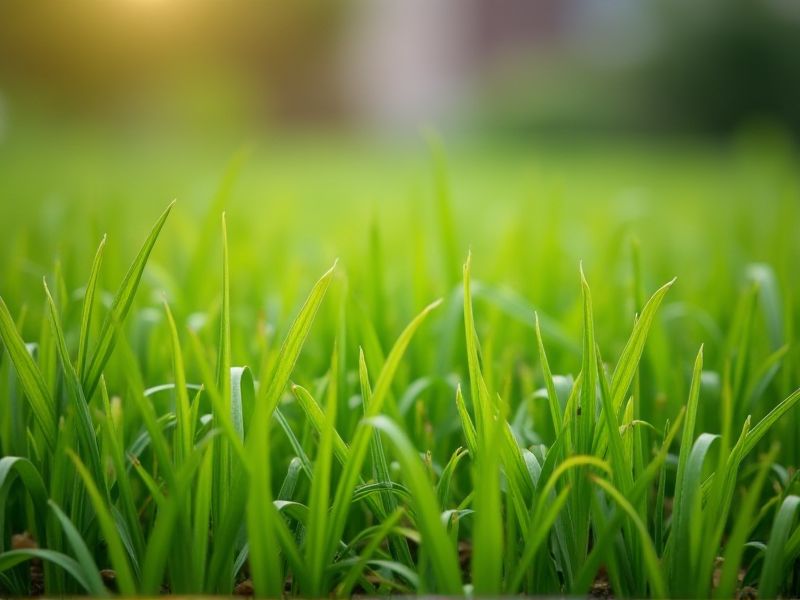
Low-growing plants that replace grass, such as creeping thyme, clover, and moss, offer a sustainable landscape alternative. Creeping thyme not only tolerates foot traffic but also produces aromatic foliage and attractive purple flowers, attracting pollinators. Clover, particularly white clover, enriches the soil with nitrogen, reducing the need for fertilizers while providing a lush green cover. Moss serves as an excellent ground cover in shaded areas, requiring minimal maintenance and creating a serene, natural aesthetic. By incorporating these plants into your yard, you can enhance biodiversity while reducing water consumption and lawn care efforts.
List of some Low-growing plants that replace grass
- Creeping Thyme (Thymus serpyllum)
- Irish Moss (Sagina subulata)
- Corsican Mint (Mentha requienii)
- Dichondra (Dichondra repens)
- White Clover (Trifolium repens)
- Bugleweed (Ajuga reptans)
- Mazus (Mazus reptans)
- Blue Star Creeper (Isotoma fluviatilis)
- Roman Chamomile (Chamaemelum nobile)
- Woolly Thyme (Thymus pseudolanuginosus)
Important things about Low-growing plants that replace grass
Drought Resistance
Low-growing plants, such as creeping thyme, sedum, and clover, serve as effective substitutes for traditional grass in drought-prone areas. These drought-resistant options require significantly less water, often thriving in poor soil conditions while providing ground cover that reduces soil erosion. By incorporating such resilient plants into your landscape, you can create a visually appealing and environmentally friendly garden that conserves water resources. Furthermore, many of these species attract beneficial pollinators, enhancing biodiversity in your outdoor space.
Low Maintenance
Low-growing plants that replace grass offer a sustainable solution for landscaping while requiring minimal care. Options such as clover, creeping thyme, and sedum provide lush greenery without the need for frequent mowing or extensive watering. These drought-resistant alternatives thrive in various climates and can improve soil quality by fixing nitrogen. By incorporating low-growing plants into your garden, you not only reduce maintenance efforts but also create an eco-friendly environment that supports local wildlife.
Nutrient Requirements
Low-growing plants that replace grass, such as clover, creeping thyme, and moss, offer sustainable options for lawns and landscapes. These plants generally require less fertilizer and water, adapting well to various soil types and reducing maintenance efforts. For optimal growth, low-growing plants benefit from nutrient-rich compost, which enhances soil health and promotes vigorous root development. Implementing a proper care regimen, including mulching and occasional pruning, can ensure your low-growing plant garden thrives while contributing to biodiversity.
Pest Resistance
Low-growing plants, such as clover, thyme, and creeping phlox, provide effective alternatives to traditional grass lawns, particularly regarding pest resistance. These ground covers often exhibit natural pest-repelling properties, reducing the need for chemical pesticides and promoting a healthier ecosystem. Moreover, they require less water and maintenance, making them a sustainable choice for homeowners seeking eco-friendly landscaping solutions. By incorporating these resilient plants into your yard, you not only enhance the aesthetic appeal but also contribute to a more balanced environment free from harmful pests.
Ground Cover Benefits
Low-growing plants, such as clover, thyme, and moss, serve as excellent alternatives to traditional grass lawns by providing dense ground cover that suppresses weeds and conserves soil moisture. These plants are often more drought-resistant, requiring less water and maintenance, which can significantly reduce your garden's environmental impact. With a range of colors and textures, low-growing plants enhance the aesthetic appeal of your landscape while improving soil health through natural nutrient cycling. By choosing these sustainable options, you create a lush outdoor space that supports biodiversity and promotes a healthier ecosystem.
Aesthetic Appeal
Low-growing plants that replace grass offer a vibrant and eco-friendly alternative for landscaping. These ground covers, such as creeping thyme and Scotch moss, provide lush greenery while requiring minimal maintenance and water. Their ability to thrive in various soil types and climates enhances your garden's biodiversity and supports local pollinators. By incorporating these aesthetically pleasing plants, you create a visually appealing environment that reduces the need for chemical fertilizers and pesticides, promoting a healthier ecosystem.
Biodiversity Support
Low-growing plants that replace grass, such as creeping thyme, clover, and moss, significantly enhance biodiversity in your garden or landscape. These plants offer various ecological benefits, including providing habitats for pollinators like bees and butterflies, which are essential for crop production and maintaining healthy ecosystems. Moreover, they typically require less water and maintenance compared to traditional turf grasses, making them more sustainable choices for environmentally conscious gardeners. By integrating these ground cover plants, you can create a vibrant and diverse ecosystem that supports wildlife while reducing your environmental footprint.
Foot Traffic Tolerance
Low-growing plants that can withstand foot traffic, such as creeping thyme and clover, are excellent alternatives to traditional grass. These resilient ground covers not only tolerate frequent use but also require less water and maintenance, making them eco-friendly choices for your lawn. Additionally, they help suppress weeds while providing a lush, green appearance throughout the growing season. Incorporating these plants can enhance your outdoor space aesthetically and functionally, ensuring durability underfoot without sacrificing beauty.
Soil Erosion Prevention
Low-growing plants, such as creeping thyme, sedum, and clover, provide effective alternatives to traditional grass for soil erosion prevention. These plants form dense mats that stabilize the soil while enhancing ground cover, reducing runoff and promoting water absorption. Their deep-root systems help bind the soil, mitigating erosion on steep slopes or in areas with loose soil. Incorporating low-growing plants in your landscape not only protects against erosion but also supports local biodiversity and reduces maintenance needs compared to conventional lawns.
Seasonal Color Changes
Low-growing plants, such as clover, creeping thyme, and sedum, offer vibrant seasonal color changes while serving as attractive grass alternatives. In spring, these plants awaken with lush green foliage complemented by small blooms, creating a lively ground cover. Summer brings an array of hues, with varieties like creeping phlox showcasing shades of pink and purple, perfect for enhancing your garden's visual appeal. As autumn approaches, the foliage of many low-growing plants transitions into warm tones, providing a stunning backdrop while minimizing the need for traditional lawn maintenance.
